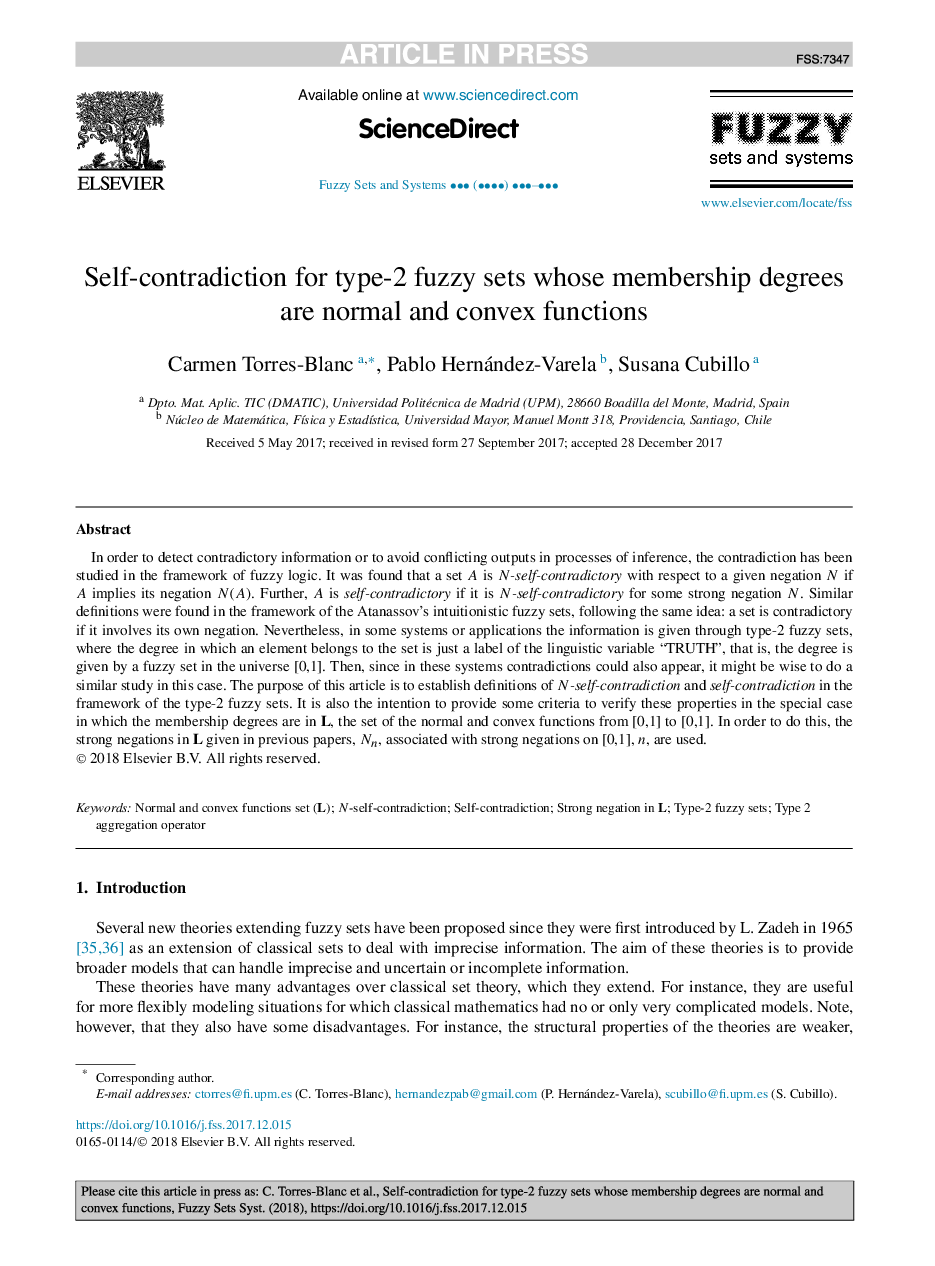| Article ID | Journal | Published Year | Pages | File Type |
|---|---|---|---|---|
| 10225700 | Fuzzy Sets and Systems | 2018 | 19 Pages |
Abstract
In order to detect contradictory information or to avoid conflicting outputs in processes of inference, the contradiction has been studied in the framework of fuzzy logic. It was found that a set A is N-self-contradictory with respect to a given negation N if A implies its negation N(A). Further, A is self-contradictory if it is N-self-contradictory for some strong negation N. Similar definitions were found in the framework of the Atanassov's intuitionistic fuzzy sets, following the same idea: a set is contradictory if it involves its own negation. Nevertheless, in some systems or applications the information is given through type-2 fuzzy sets, where the degree in which an element belongs to the set is just a label of the linguistic variable “TRUTH”, that is, the degree is given by a fuzzy set in the universe [0,1]. Then, since in these systems contradictions could also appear, it might be wise to do a similar study in this case. The purpose of this article is to establish definitions of N-self-contradiction and self-contradiction in the framework of the type-2 fuzzy sets. It is also the intention to provide some criteria to verify these properties in the special case in which the membership degrees are in L, the set of the normal and convex functions from [0,1] to [0,1]. In order to do this, the strong negations in L given in previous papers, Nn, associated with strong negations on [0,1], n, are used.
Keywords
Related Topics
Physical Sciences and Engineering
Computer Science
Artificial Intelligence
Authors
Carmen Torres-Blanc, Pablo Hernández-Varela, Susana Cubillo,
